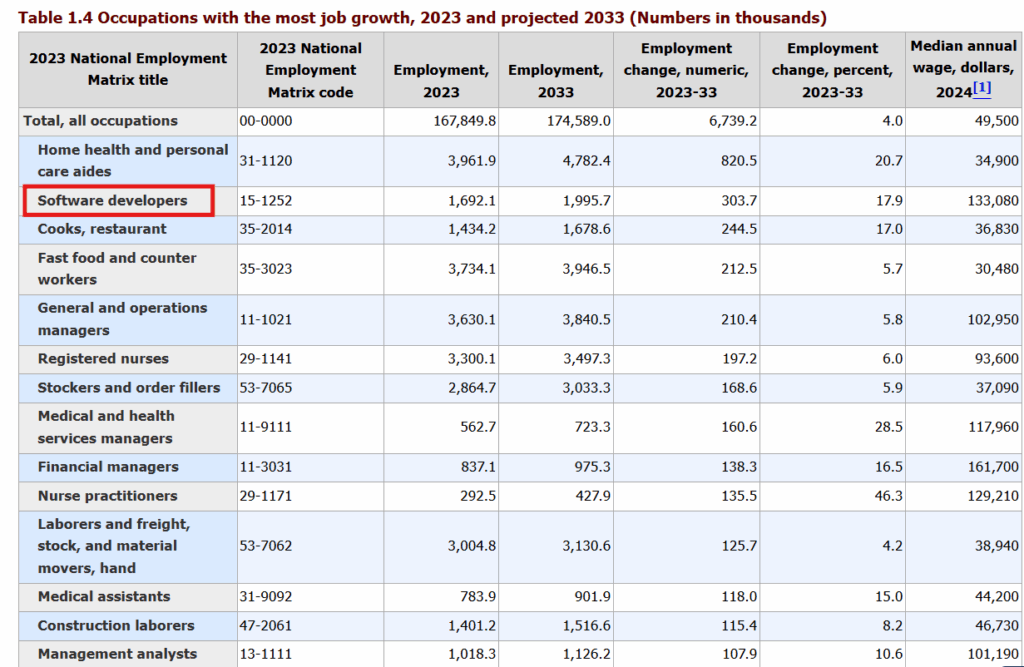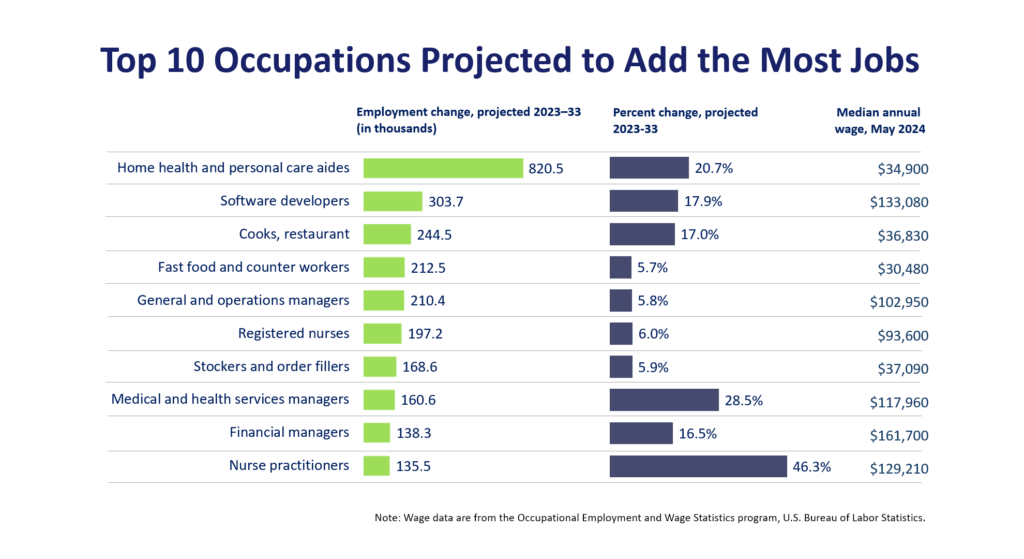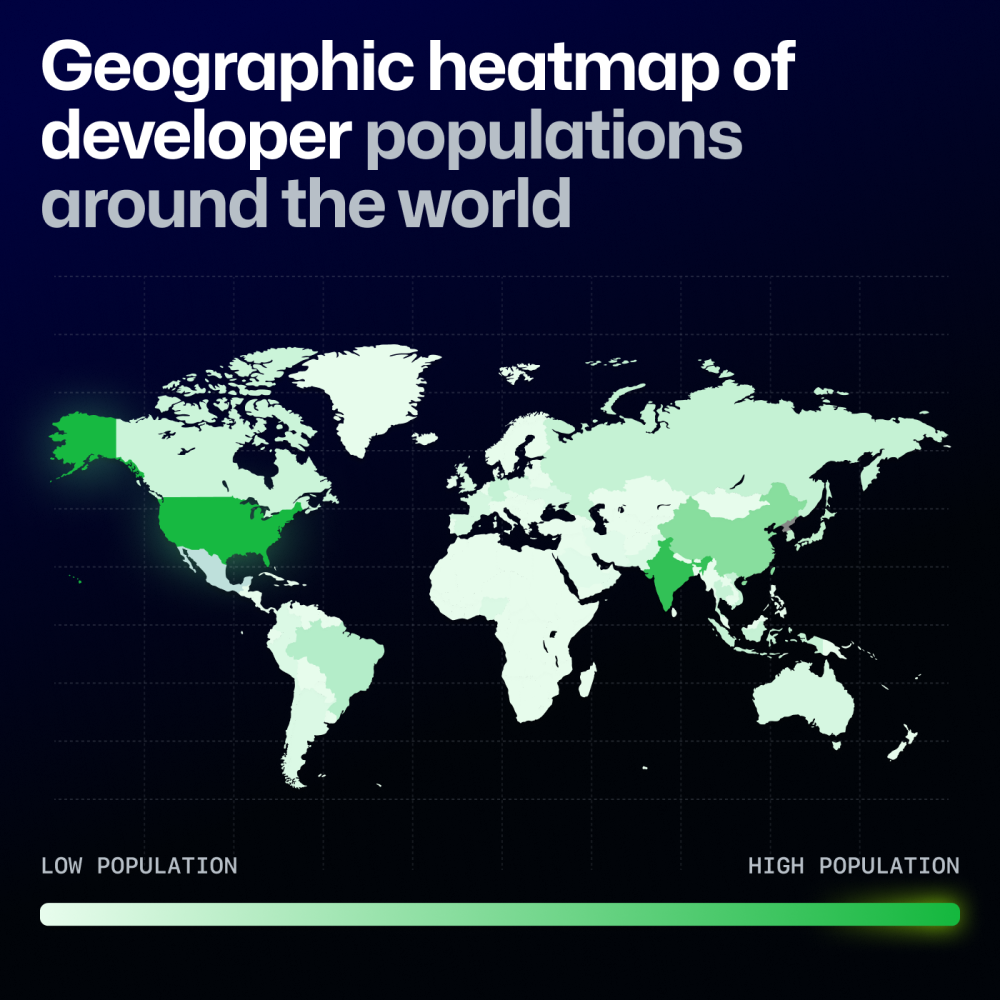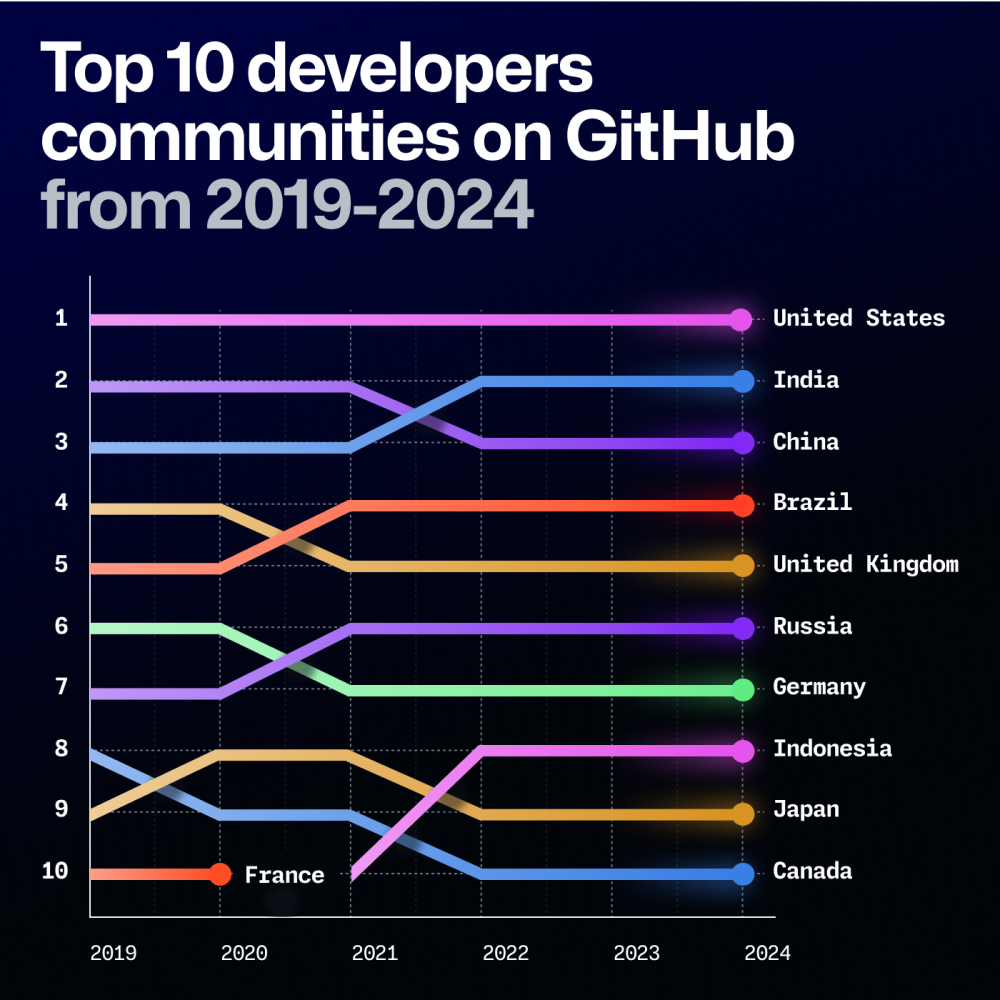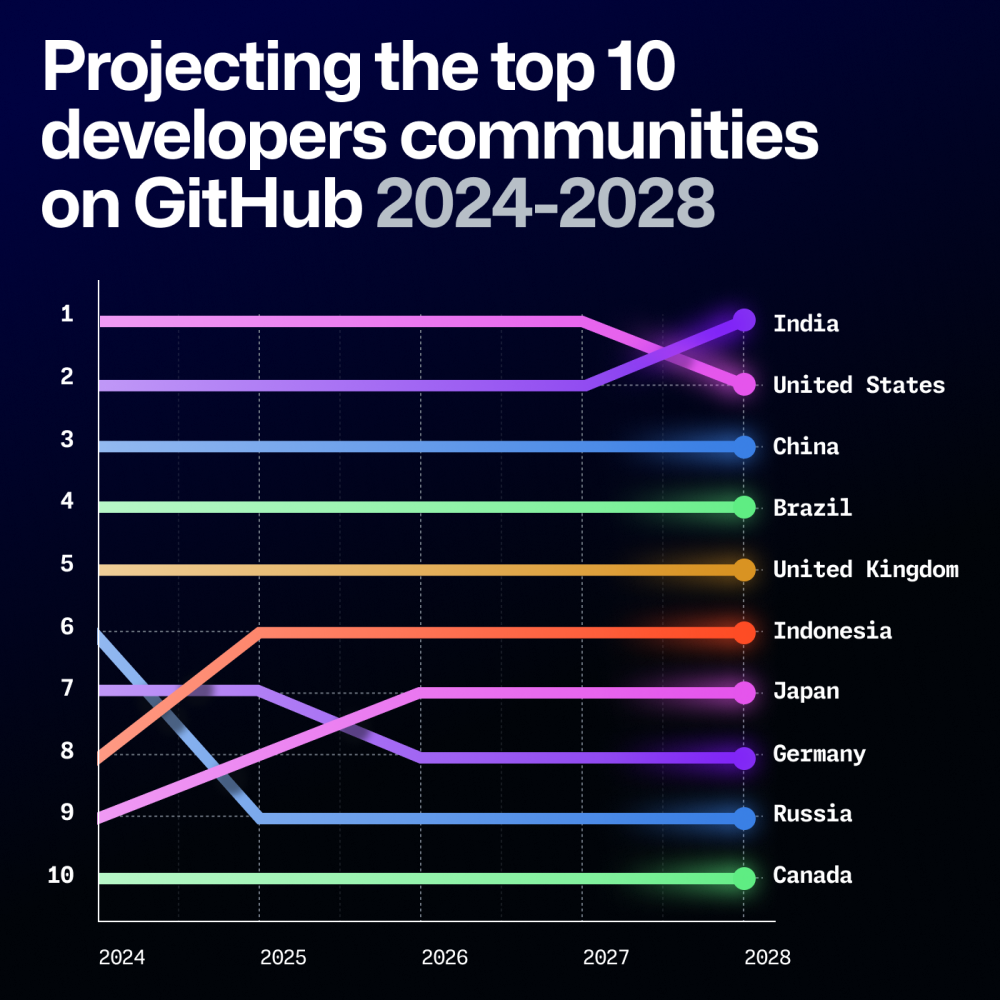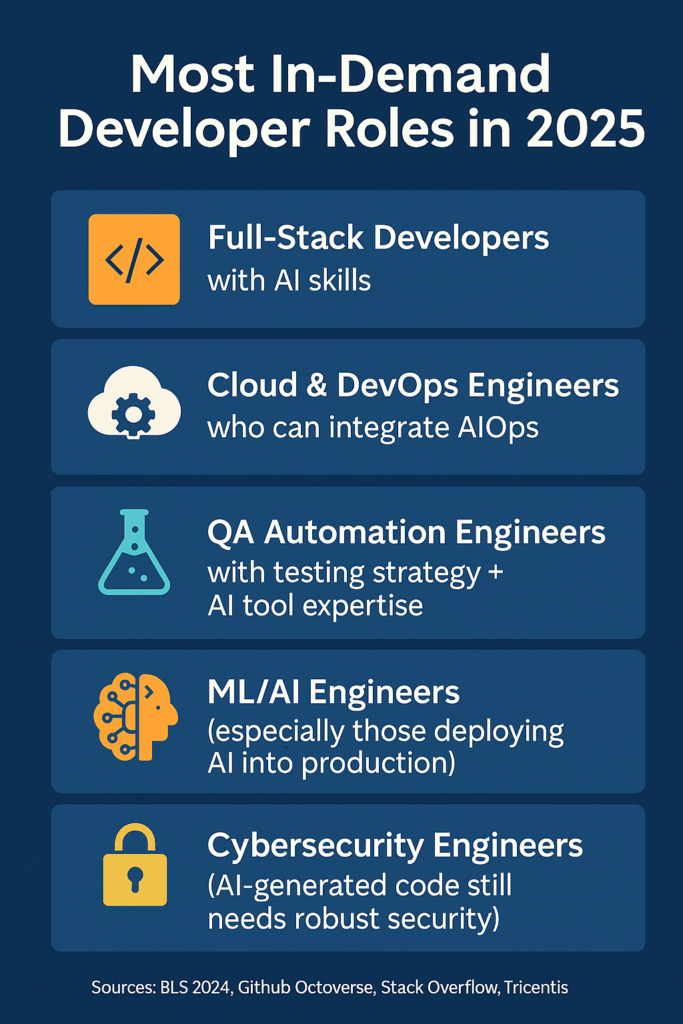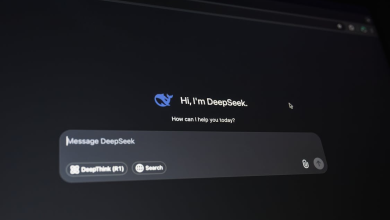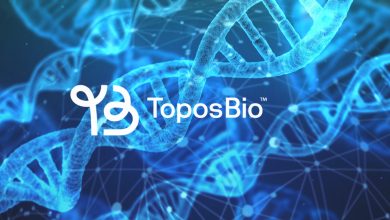
Quick Summary:
- AI and no-code tools reduce grunt work, not jobs.
- Full-stack, DevOps, AI-QA, and cybersecurity roles are growing.
- Developers are becoming “product builders” with AI assistance.
- India is upskilling fast; the U.S. is hiring more hybrid engineers.
- AI is the new intern, not the new CTO.
According to the U.S. Bureau of Labor Statistics, software developers rank among the top two fastest-growing occupations.
Source: Occupations with the most job growth: U.S. Bureau of Labor Statistics
Everyone’s saying AI will replace developers. But if you actually talk to developers, or hire them, you’ll hear a very different story.
No-code platforms and AI tools have shaken up the software world, but are they really replacing developers? Not exactly. While some companies push the narrative that AI can handle everything, real-world data, hiring trends, and developer feedback tell a different story: traditional development roles are still in demand. They’re just changing.
This article breaks down the real impact of AI and no-code tools on backend, frontend, DevOps, QA, and full-stack developer roles across North America and India. We also examine which roles are most in demand post-AI boom and what this means for engineers, hiring managers, and tech leaders.
Source: Largest Growth Occupations: U.S. Bureau of Labor Statistics
Are AI and No-Code Tools Replacing Developers?
According to the Stack Overflow 2024 Developer Survey, over 76% of developers are using or planning to use AI tools, but most don’t see them as a threat. Instead, they see AI as boosting productivity, especially for boilerplate tasks.
Similarly, the GitHub Octoverse 2023 report shows that 92% of developers are experimenting with AI-powered coding tools. These tools help developers move faster but still require oversight, debugging, and architecture planning.
LinkedIn discussions show mixed opinions, with many senior engineers calling out the “AI is replacing devs” messaging as a marketing overreach. On Reddit, developers joke that AI can replace junior devs if you don’t mind broken build pipelines, hallucinated code, and unreadable tests.
Voices from the Community
”Copilot gets me 50% there. I still need to clean up the mess.” – Reddit
”The myth is: AI writes code. The reality is: AI generates things that look like code.” – Hacker News
”We’re now spending more time reviewing AI-generated pull requests than writing code from scratch. ”– LinkedIn comment by a senior engineer at a SaaS startup
These quotes highlight a shared sentiment: AI is not yet capable of replacing human developers, but it is changing how they work.
Case Study: From Team of 7 to 3, How One Startup Rebuilt With AI
A healthtech startup based in Bangalore originally had seven developers working on a patient records management tool. In 2024, they reduced their engineering team to three full-stack developers—all trained in prompt engineering and AI tooling. Using GitHub Copilot, Replit Ghostwriter, and a no-code integration platform (like Make), they:
- Automated 70% of form generation and API integrations
- Reduced feature delivery time by 40%
- Shifted their QA engineer into a hybrid AI-testing + UX role
Despite the reduced headcount, they hit feature parity in less than four months, highlighting that AI makes devs more efficient, not obsolete.
Role-Specific Impact of AI and No-Code Tools
| Role | Tasks AI Can Assist With | Tasks Requiring Human Expertise |
|---|---|---|
| Backend Developer | CRUD operations, API scaffolding | Architecture, security, scalability |
| Frontend Developer | Component generation, styling | UX design, performance optimization |
| DevOps Engineer | Log parsing, auto-deployment | Infrastructure orchestration, compliance |
| QA/Test Engineer | Test case generation, bug spotting | Test strategy, AI behavior validation |
| Full-Stack Developer | Full app scaffolding | Integration, product thinking, and team collaboration |
Backend Developers
AI can automate tasks like CRUD operations or basic API scaffolding, but falls short on system architecture and complex logic. No-code tools may speed up prototyping, but enterprise-scale backends still need real engineers.
AI can spit out 80% of your backend, but the 20% it misses is where all your bugs and business logic live. – Sridhar Vembu, CEO, Zoho
- 92% of developers use AI coding tools, but only 22% use them to write code autonomously.
- Most use them for boilerplate, suggestions, or speeding up known tasks.
- Only 3% of developers feel “very confident” letting AI generate production code without review.
- 76% use AI tools to help with code, not replace it.
- Top AI use cases: debugging help, code examples, refactoring suggestions.
- AI-generated tests often miss edge cases.
- Manual QA is still required for exploratory, risk-based, and UX testing.
- Replit, Cursor, and CodeWhisperer Usage Trends Suggest these tools boost prototyping and snippet generation.
- But engineers still report spending time validating, optimizing, and editing AI output.
Frontend Developers
No-code tools like Webflow and Wix help with simple websites, but custom interactions, animations, and user flows still require frontend engineers. AI helps scaffold UI components but can’t replace user-centered design.
DevOps Engineers
AI tools like K8sGPT and Datadog’s Watchdog help with log analysis and error prediction. However, orchestration, security, and cross-team collaboration still demand human oversight.
QA/Testers
AI-driven test generators speed up regression testing, but human testers still handle exploratory testing, AI validation, and test strategy. The demand for QA engineers who can leverage AI is rising.
Tricentis reports that “AI won’t reduce the number of testing jobs. On the contrary, there will be an increased demand for testers with specific skills.” (Tricentis Report)
Full-Stack Developers
With AI taking care of repetitive tasks, full-stack engineers are becoming “product builders.” Tools like Cursor and Replit empower solo devs to ship what used to take a team.
One skilled dev with GitHub Copilot can do what 5 did five years ago.” – Greg Isenberg (Twitter)
North America vs India: How Developer Hiring is Changing
| Region | Trends |
| North America | Developer job postings dipped in 2023 (per ADP report) due to market corrections, not AI. Hiring shifted toward experienced, AI-fluent developers who can thrive in leaner teams. |
| India | India remains the second-largest developer hub globally. Companies like Infosys and TCS are training thousands of engineers in AI. Routine coding tasks are shrinking, but demand for full-stack and machine learning specialists is increasing. |
Source: GitHub
Source: GitHub
Source: GitHub
Most In-Demand Developer Roles in 2025
Adaptation, Not Extinction
AI and no-code tools are transforming how software is built but don’t remove developers. They’re eliminating grunt work, which means more room for creativity, strategy, and high-leverage problem-solving.
Software isn’t disappearing. It’s multiplying. And someone still needs to define, shape, and ship it. That someone? A developer with AI in their toolkit.

